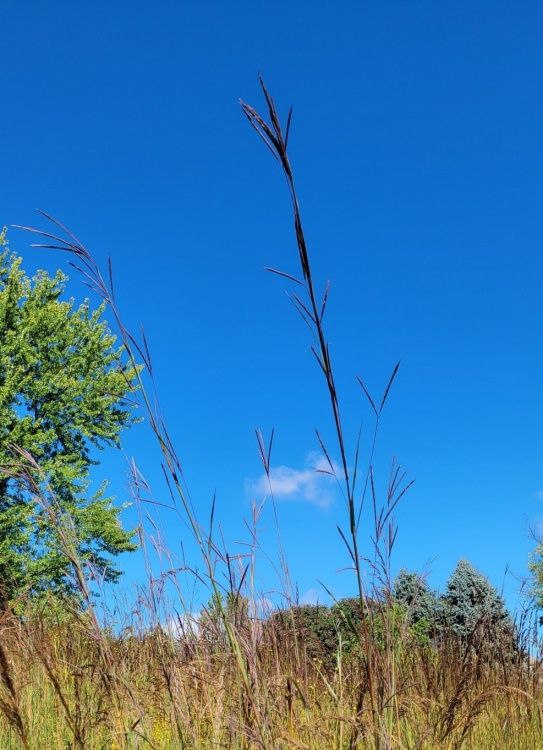Plant of the Week: Big Bluestem
posted
Check out this iconic keystone species. This tall grass is big bluestem (Andropogon gerardii), also known as turkeyfoot grass. Believe it or not, this grass can grow seven feet tall and some say it can exceed even that. It gets its common name “turkeyfoot” from its identifying flower/seed pattern. In fall, its flower and seed heads form a recognizable turkey foot pattern with multiple “toes” growing from the top of the plant resembling a bird's foot.
Big bluestem is a keystone species in our native tall grass prairies. Much of southern Wisconsin was once covered by the now endangered and fragmented tallgrass prairie and oak savannah ecosystems. Unlike the grasses you'll find in your yard, big bluestem is what's called a “warm-season grass”. Warm season grasses start growing later in the spring, while cool season grasses like those you find in yards and golf courses start growing early in spring. Because of this, our native warm-season grasses can be outcompeted and shaded out by these non-native grasses, further endangering these ecosystems.
One essential tool to protect and maintain our native prairies and savannas is a little surprising. It’s fire! Our native prairies and savannas are what's called “disturbance-based ecosystems”. These ecosystems require major disturbances such as prairie fires to exist. Many of our native prairie plants have special adaptations specifically to withstand fires. Big bluestem, while impressive above ground, grows equally deep roots underground. When a fire moves through a prairie, these deep roots stabilize the ground, preventing erosion of the soil. Their massive energy stores allow big bluestem and other fire adapted plants to bounce right back after the fire. Prairie fires keep woody plants that would overtake and shade-out the prairie plants at bay. These fires also burn away non-fire-adapted species like the non-native cool-season grasses that compete with our tall grass prairie species.

Many first nations and native American tribes practiced “prescribed burns”, the intentional act of burning an area to maintain fire-dependent ecosystems. In the modern day, we do the same thing. In late fall and early spring, you may see burned black sections of prairies on the side of the road. These burns are performed by trained conservationists to maintain this endangered ecosystem. Key to this ecosystem are the tall grasses that provide habitat for badgers, shelter to ground birds and food for bison. Madison has several prairie and oak savannah restoration projects ongoing. See if you can spot a big bluestem or a prescribed burn on a walk through one of our greenways or ponds this fall.
-City of Madison Conservation Crew
This content is free for use with credit to City of Madison Engineering.
